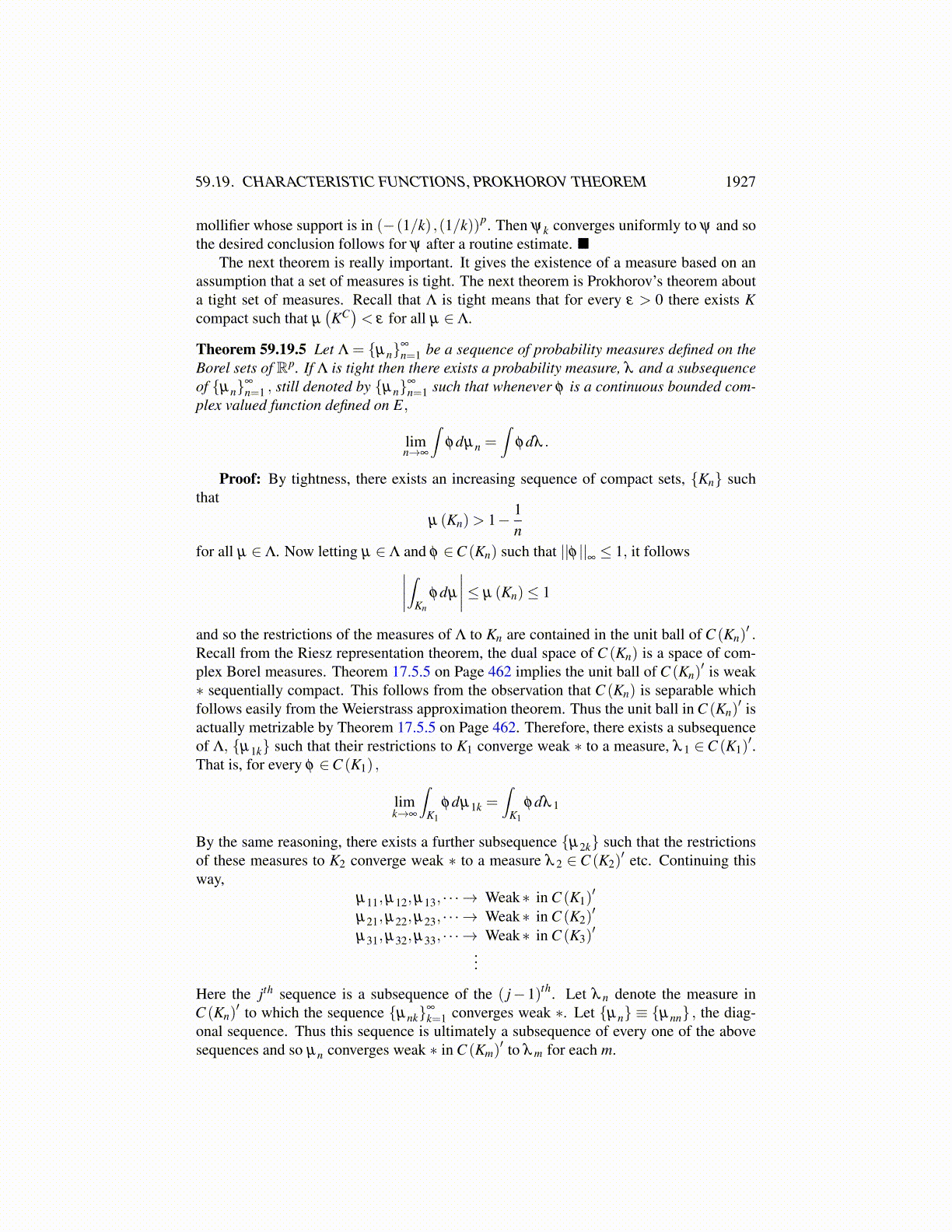
59.19. CHARACTERISTIC FUNCTIONS, PROKHOROV THEOREM 1927
=∫[|x j|≥ 2
u ]1dµn (x)
= µn
([x :∣∣x j∣∣≥ 2
u
]).
If ε > 0 is given, there exists r > 0 such that if u≤ r,
1u
∫ u
−u(1−ψ (te j))dt < ε/p
for all j = 1, · · · , p and so, by the dominated convergence theorem, the same is true withφ µn
in place of ψ provided n is large enough, say n≥ N (u). Thus, from 59.19.46, if u≤ r,and n≥ N (u),
µn
([x :∣∣x j∣∣≥ 2
u
])< ε/p
for all j ∈ {1, · · · , p}. It follows that for u≤ r and n≥ N (u) ,
µn
([x : ||x||
∞≥ 2
u
])< ε.
because [x : ||x||
∞≥ 2
u
]⊆ ∪p
j=1
[x :∣∣x j∣∣≥ 2
u
]This proves the lemma because there are only finitely many measures, µn for n < N (u) andthe compact set can be enlarged finitely many times to obtain a single compact set, Kε suchthat for all n,µn ([x /∈ Kε ])< ε.
As before, there are simple modifications of Lemmas 59.18.3 and 59.18.4. The first ofthese is as follows.
Lemma 59.19.3 If φ µn(t)→ φ µ (t) for all t, then whenever ψ ∈S, the Schwartz class,
µn (ψ)≡∫Rp
ψ (y)dµn (y)→∫Rp
ψ (y)dµ (y)≡ µ (ψ)
as n→ ∞.
Proof: By definition,
φ µ (y)≡∫Rp
eiy·xdµ (x) .
Also remember the inverse Fourier transform. Letting ψ ∈S, the Schwartz class,
F−1 (µ)(ψ) ≡ µ(F−1
ψ)≡∫Rp
F−1ψdµ
=1
(2π)p/2
∫Rp
∫Rp
eiy·xψ (x)dxdµ (y)
=1
(2π)p/2
∫Rp
ψ (x)∫Rp
eiy·xdµ (y)dx
=1
(2π)p/2
∫Rp
ψ (x)φ µ (x)dx